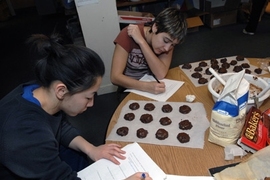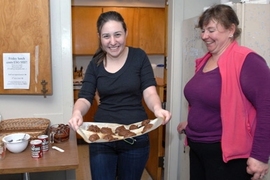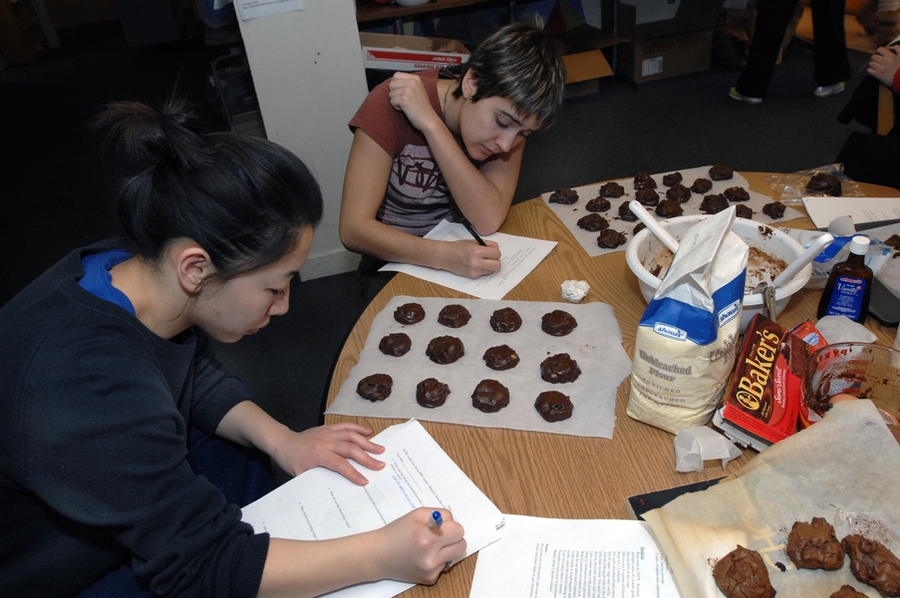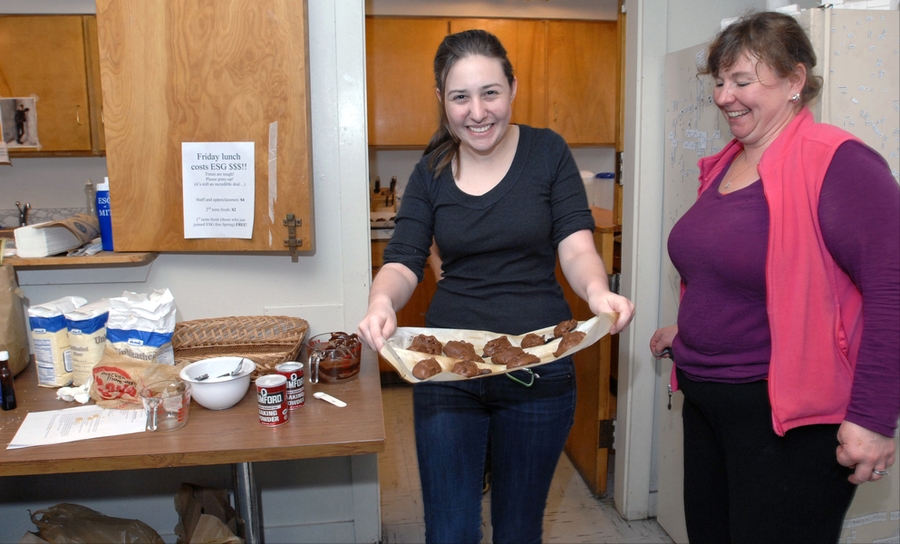Inside the sixth-floor kitchen, students are busy measuring flour, melting chocolate and beating eggs. But they're not just trying to satisfy a sweet tooth -- they're doing science.
This is "Kitchen Chemistry," a course in which students learn principles of food chemistry through experiments involving chocolate chip cookies, hot sauce, chili, coffee and ice cream, among other tasty treats.
Above: MIT chemist Patricia Christie discusses her course, 'Kitchen Chemistry,' and how it makes students look at their food differently.
Patricia Christie, a lecturer in MIT's Experimental Study Group, has been teaching "Kitchen Chemistry" every spring since 2000.
"I'm a chemist who likes to cook," she says. "In this class, we apply chemical principles to food to get students to think about food in a different way."
Students learn why certain recipes call for baking soda and others require baking powder, and why chopping an onion makes you cry. And this is undoubtedly the only chemistry class at MIT in which the students get to eat their experiments.
"That's the biggest perk," says junior Jenna Houston, a chemical engineering major.
"My roommate has already put in a request" for some of the "Death by Chocolate" cookies the class whipped up during a recent session, said Houston's baking partner, Sarah Cooper-Davis, a senior mechanical engineering major.
The course is limited to 18 students, and is so popular that it fills up within minutes of the opening of class registration. Another 30 students were waitlisted this year.
The class is part of the Experimental Study Group, an alternative academic program at MIT that offers small, hands-on seminars for all undergraduates, as well as a small group-learning program in the freshman core subjects.
In the case of the Kitchen Chemistry class, the hands-on approach gives students a chance to figure out culinary mysteries such as why you need to add vinegar to milk when baking scones (the batter needs an acid to combine with baking soda, a base, to produce carbon dioxide that causes the dough to rise).
"The fun thing is they don't even realize they're learning about chemistry," says Christie, "but they're learning a lot."
A version of this article appeared in MIT Tech Talk on February 25, 2009 (download PDF).









